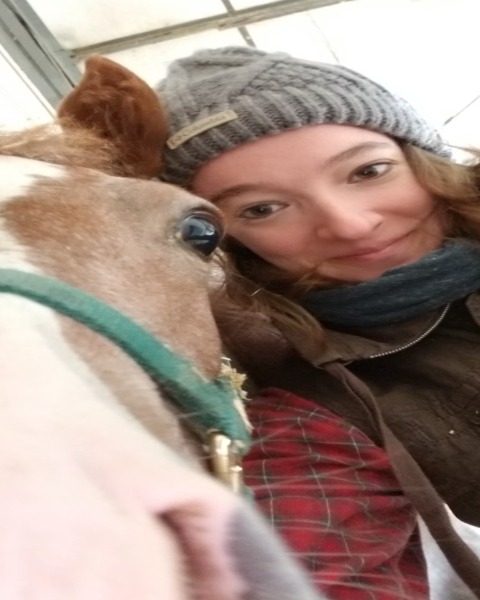Equine
E47 - The Acute Phase Response of Serum Amyloid A After Routine Vaccination in Healthy Adult Horses
Thursday, June 15, 2023
2:30 PM - 2:45 PM ET
Location: PCC 108B
CE: 0.25

Cassandra Baumgarten, DVM
Equine Medicine Resident
Kansas State University, Department of Clinical Sciences
Manhattan, Kansas, United States
Research Abstract - Oral Presenter(s)
Abstract: Background: Serum amyloid A (SAA) is an acute phase protein. Routine vaccination is intended to induce an antigen-specific inflammatory response. In some instances, this response can be debilitating. Characterizing the acute phase inflammatory response after vaccination in healthy horses will provide a baseline for expected SAA expression.
Hypothesis/Objectives: The objective was to measure the effect of routine vaccination on SAA concentrations in apparently healthy horses. It was hypothesized that SAA would increase following routine vaccination compared to placebo administration.
Animals: Apparently healthy client-owned horses (n=21) and Kansas State University College of Veterinary Medicine teaching horses (n=15) were included.
Methods: In Experiment 1 (n=8), a blinded, randomized, prospective, cross-over study was performed. Horses were either vaccinated (rabies, tetanus, West Nile, Eastern and Western equine encephalomyelitis, equine herpesvirus-1/-4, influenza) or administered saline, and SAA was measured at 6, 12, and 24 hours and daily until day 10. In Experiment 2 (n=28), a prospective, observational study measured SAA post-vaccination at 12 and 24 hours and daily until day 10.
Results: Over time, vaccination resulted in increased SAA concentrations compared to placebo without clinical evidence of an adverse reaction. The median SAA post-vaccination peaked on day 2 (median 1,872 µg/ml, interquartile range:0-2,402.5) and returned to normal (< 20 µg/ml) by day 9 (median 6 µg/ml, interquartile range:0-23.5) post-vaccination.
Conclusions and clinical importance: Routine vaccination results in an increased SAA. This provides evidence for a period of convalescence following vaccination. Measuring SAA following vaccination cannot be used as an indicator of illness.
Hypothesis/Objectives: The objective was to measure the effect of routine vaccination on SAA concentrations in apparently healthy horses. It was hypothesized that SAA would increase following routine vaccination compared to placebo administration.
Animals: Apparently healthy client-owned horses (n=21) and Kansas State University College of Veterinary Medicine teaching horses (n=15) were included.
Methods: In Experiment 1 (n=8), a blinded, randomized, prospective, cross-over study was performed. Horses were either vaccinated (rabies, tetanus, West Nile, Eastern and Western equine encephalomyelitis, equine herpesvirus-1/-4, influenza) or administered saline, and SAA was measured at 6, 12, and 24 hours and daily until day 10. In Experiment 2 (n=28), a prospective, observational study measured SAA post-vaccination at 12 and 24 hours and daily until day 10.
Results: Over time, vaccination resulted in increased SAA concentrations compared to placebo without clinical evidence of an adverse reaction. The median SAA post-vaccination peaked on day 2 (median 1,872 µg/ml, interquartile range:0-2,402.5) and returned to normal (< 20 µg/ml) by day 9 (median 6 µg/ml, interquartile range:0-23.5) post-vaccination.
Conclusions and clinical importance: Routine vaccination results in an increased SAA. This provides evidence for a period of convalescence following vaccination. Measuring SAA following vaccination cannot be used as an indicator of illness.

